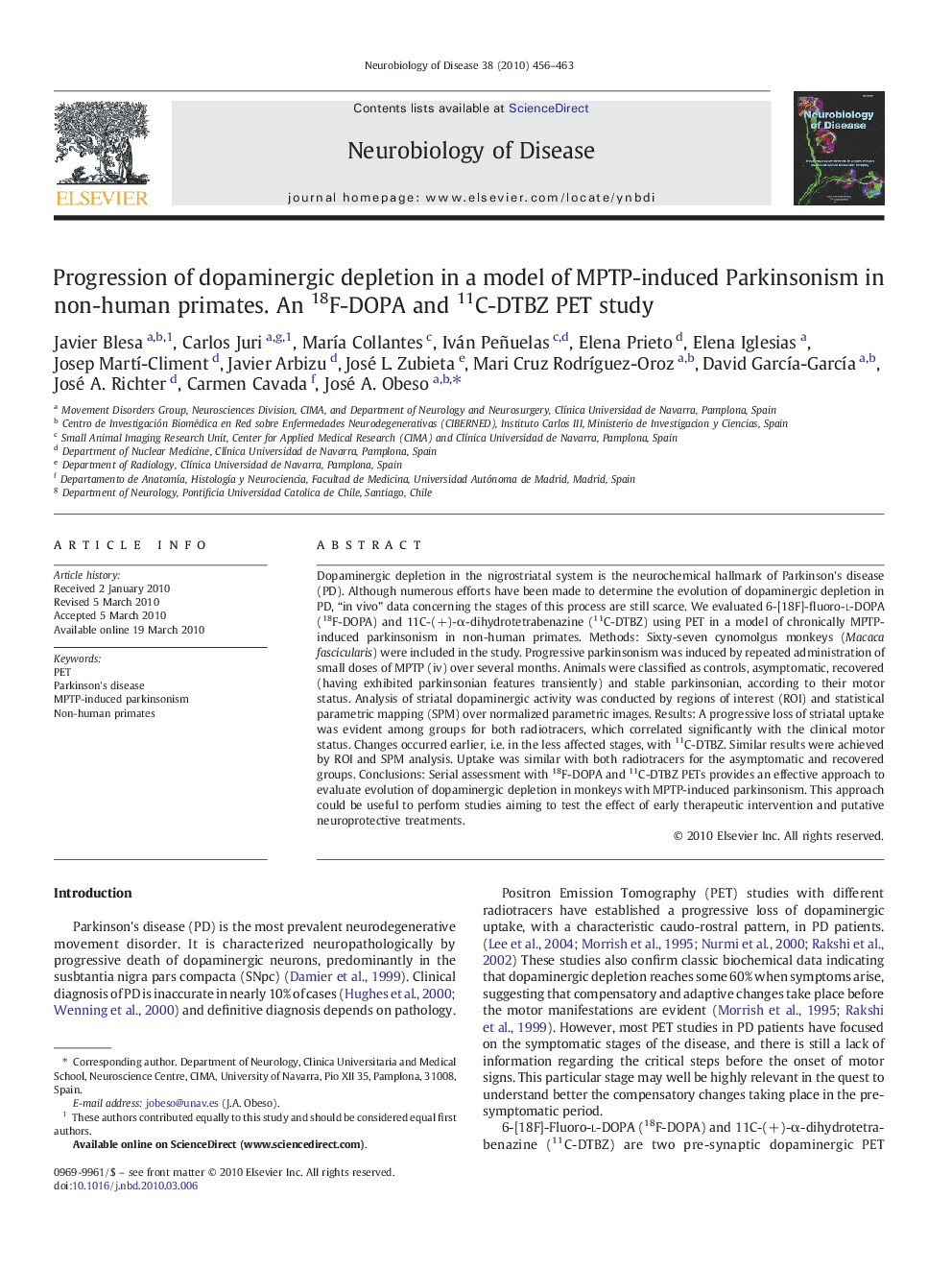| Article ID | Journal | Published Year | Pages | File Type |
|---|---|---|---|---|
| 3069808 | Neurobiology of Disease | 2010 | 8 Pages |
Dopaminergic depletion in the nigrostriatal system is the neurochemical hallmark of Parkinson's disease (PD). Although numerous efforts have been made to determine the evolution of dopaminergic depletion in PD, “in vivo” data concerning the stages of this process are still scarce. We evaluated 6-[18F]-fluoro-l-DOPA (18F-DOPA) and 11C-(+)-α-dihydrotetrabenazine (11C-DTBZ) using PET in a model of chronically MPTP-induced parkinsonism in non-human primates. Methods: Sixty-seven cynomolgus monkeys (Macacafascicularis) were included in the study. Progressive parkinsonism was induced by repeated administration of small doses of MPTP (iv) over several months. Animals were classified as controls, asymptomatic, recovered (having exhibited parkinsonian features transiently) and stable parkinsonian, according to their motor status. Analysis of striatal dopaminergic activity was conducted by regions of interest (ROI) and statistical parametric mapping (SPM) over normalized parametric images. Results: A progressive loss of striatal uptake was evident among groups for both radiotracers, which correlated significantly with the clinical motor status. Changes occurred earlier, i.e. in the less affected stages, with 11C-DTBZ. Similar results were achieved by ROI and SPM analysis. Uptake was similar with both radiotracers for the asymptomatic and recovered groups. Conclusions: Serial assessment with 18F-DOPA and 11C-DTBZ PETs provides an effective approach to evaluate evolution of dopaminergic depletion in monkeys with MPTP-induced parkinsonism. This approach could be useful to perform studies aiming to test the effect of early therapeutic intervention and putative neuroprotective treatments.
